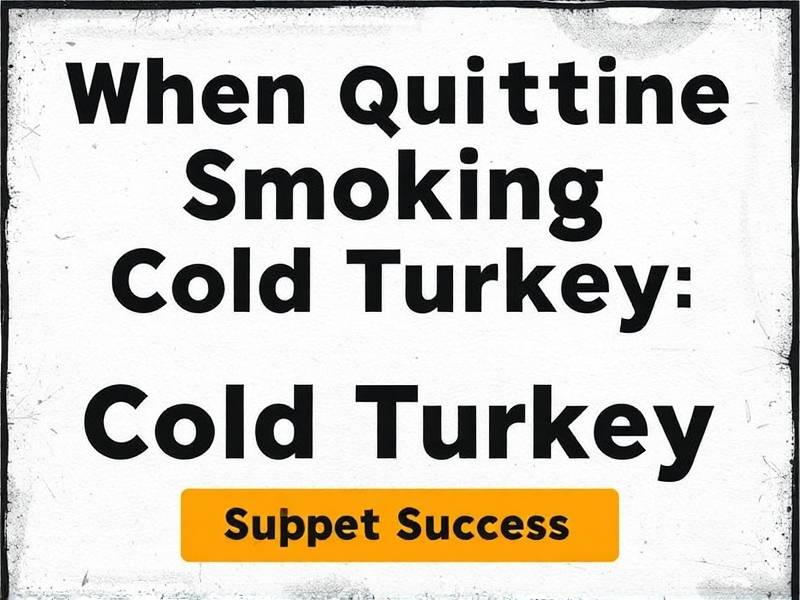When Quitting Smoking Cold Turkey: A Guide to Success
When Quitting Smoking Cold Turkey: A Guide to Success
Introduction: Quitting smoking can be a challenging endeavor, but it's one that millions of people have successfully undertaken. One popular method is quitting cold turkey, which involves going without any nicotine or tobacco products. This guide will provide you with essential tips and strategies to increase your chances of success when choosing this method.
Section 1: Understanding Cold Turkey What is Cold Turkey? Cold turkey refers to the abrupt cessation of smoking without the use of nicotine replacement therapy (NRT) or other aids. This method requires strong willpower and determination.

Why Choose Cold Turkey? Some individuals prefer cold turkey because it's a straightforward approach that doesn't involve additional costs for NRT or other aids. It also allows you to experience the full effects of withdrawal, which may help reinforce your decision to quit.
Section 2: Preparing for Cold Turkey Identify Your Reasons Understanding why you want to quit smoking can provide motivation during the challenging times ahead. Write down your reasons and refer back to them when needed.
Develop a Quit Plan Create a detailed plan that outlines how you'll handle cravings, triggers, and other challenges during your quit journey. Include strategies for managing stress, seeking support from friends and family, and celebrating milestones.
Section 3: Managing Withdrawal Symptoms Common Withdrawal Symptoms When you quit smoking cold turkey, you may experience withdrawal symptoms such as cravings, irritability, anxiety, depression, and restlessness.
Coping Strategies To manage withdrawal symptoms:
- Stay busy: Engage in activities that keep your mind off smoking.
- Exercise: Physical activity can help reduce withdrawal symptoms and improve mood.
- Practice relaxation techniques: Meditation, deep breathing exercises, or yoga can help manage stress.
- Seek support: Lean on friends, family, or support groups for encouragement and guidance.
Section 4: Avoiding Relapse Identify Your Triggers Triggers are situations or emotions that make you want to smoke. Recognize your triggers so you can avoid them or cope with them effectively.
Develop Coping Mechanisms Create strategies for dealing with triggers when they arise:
- Replace smoking with healthy habits: Find alternative activities like chewing gum or snacking on healthy foods.
- Use distraction techniques: Distract yourself from the urge to smoke by engaging in a different activity.
- Communicate with others: Let friends and family know about your triggers so they can help you avoid them.
Section 5: Celebrating Success Set Milestones Set achievable milestones along your quit journey to celebrate your progress:
- One week smoke-free
- One month smoke-free
- Three months smoke-free
Celebrate Your Successes Take time to acknowledge your accomplishments by treating yourself to something special or sharing your success with loved ones.

Conclusion: Quitting smoking cold turkey is a challenging but rewarding experience. By understanding the process, preparing adequately, managing withdrawal symptoms effectively, avoiding relapse triggers, and celebrating milestones along the way, you can increase your chances of success in this life-changing endeavor. Remember that quitting is not just about giving up cigarettes; it's about taking control of your health and well-being for a brighter future.
